Text

As long as there is Chocolate, there will be Happiness 😋
Daily inspiration. Discover more photos at Just for Books…?
38 notes
·
View notes
Text

Good morning❗ 🎶☕🍩🌞
Daily inspiration. Discover more photos at Just for Books…?
2 notes
·
View notes
Text

Music Is The Universal Language of Mankind 🎶🎵
Daily inspiration. Discover more photos at Just for Books…?
7 notes
·
View notes
Text
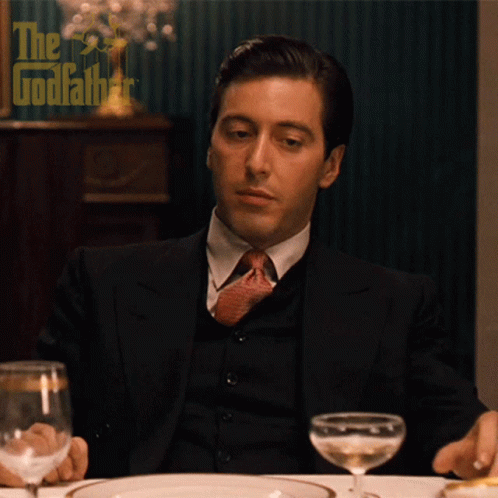
Are you following my Blog❓😉
Daily inspiration. Discover more photos at Just for Books…?
6 notes
·
View notes
Text

Βίοι αγίων: Tα παιδικά χρόνια του Αγίου Στέφανου του Παπατζή
Αυτός που γνωρίζουμε ως Στέφανο Κασσελάκη ή Στέφανο με τα κολλητά ρούχα ή ηγέτη της Τζάκρη, είναι στην πραγματικότητα ένας εκλεκτός του Θεού
Είναι λογικό να εξεπλάγησαν οι άπιστοι συμπολίτες όταν ο ίδιος ο Στέφανος με τα κολλητά ρούχα αποκάλυψε ότι κατά τη διάρκεια της βάφτισής του το λάδι σχημάτισε το σημείο του σταυρού στην κολυμπήθρα. Τόσο η αθεΐα τους όσο και η άγνοια περί των εκκλησιαστικών, τους έχει κρατήσει στο σκοτάδι και δεν έχουν ιδέα ότι στην πραγματικότητα αυτός που γνωρίζουμε ως Στέφανο Κασσελάκη ή Στέφανο με τα κολλητά ρούχα ή ηγέτη της Τζάκρη, είναι στην πραγματικότητα ένας εκλεκτός του Θεού ο οποίος γεμίζει όλη τη ζωή του προέδρου του ΣΥΡΙΖΑ με θεία σημάδια.
Ας ξεκινήσουμε με τη βάφτιση στην οποία ο σταυρός από το λάδι ήταν το μικρότερο από τα θαυμαστά που έλαβαν χώρα. Γιατί αμέσως μετά το νερό της κολυμπήθρας χωρίστηκε στα δύο και από μέσα ξεπρόβαλε ένα μπαρμπούνι με φτερά αγγέλου το οποίο άρχισε να τραγουδά το «Τη Υπερμάχω» σε τραπ εκτέλεση. Αμέσως μετά μια βροντή έκανε την εκκλησία να σειστεί συθέμελα και μια φωνή ακούστηκε να λέει «Αυτό το παιδί είναι πλασμένο για μεγάλα και σπουδαία, και μια μέρα θα το δείτε στον Ευαγγελάτο».
Σε ηλικία 5 ετών ξυπνώντας ένα πρωί για να πάει στο νηπιαγωγείο, ο μικρός Στέφανος ένιωσε ένα κάψιμο στο στήθος. Αμέσως έτρεξε σε έναν καθρέφτη κι εκεί είδε στο παιδικό του δέρμα γραμμένη τη φράση «πρωθυπουργός των Ελλήνων» και από πάνω της μια κορώνα. Ξαφνικά από τα γράμματα βγήκε μια απόκοσμη λάμψη και καθώς χορωδία αγγέλων έψελνε το «Gimme Gimme Gimme» των ABBA η γραφή εξαφανίστηκε. Από τότε σε τακτά χρονικά διαστήματα ο Άγιος Στέφανος διαβάζει στο δέρμα του φράσεις ή εικόνες που τον προετοιμάζουν για το μέλλον γι’ αυτό και κάποιοι τον αποκαλούν Άγιο Στέφανο του Αιγάλεω.
Την εποχή που ακόμα πήγαινε στο δημοτικό κι ενώ είχε βγει βόλτα με τους γονείς του στους δρόμους της Εκάλης, μια μαύρη Μερσεντές 500 με εκκλησιαστική πινακίδα και τετραπλή μπούκα σταμάτησε δίπλα τους κι από μέσα βγήκε γνωστό μέλος της Ιεράς Συνόδου ο οποίος γονάτισε μπροστά στον μικρό Στέφανο και άρχισε να του φιλάει τα πόδια κλαίγοντας με αναφιλητά. Ταυτοχρόνως έψελνε «Ωσαννά εν τοις υψίστοις ευλογημένος ο ερχόμενος εν ονόματι κυρίου… Δόξα σοι κύριε δόξα σοι… Σόρι σιμς του μπι δε χάρντεστ γουέρντ» πράγμα που έκανε τους, αρχικά έκπληκτους, γονείς του να καταλάβουν ότι έτσι επιβεβαιώνεται αυτό που είχαν ήδη υποψιαστεί από τη μέρα της βάφτισης: Ο γιος τους ο μονογενής είχε έρθει στη γη για μεγάλα και σπουδαία πράγματα.
Στην εφηβεία, έχοντας χάσει ένα στοίχημα, βρέθηκε σε κινηματογράφο στον οποίο προβαλλόταν η ταινία του Θεόδωρου Αγγελόπουλου «Το βλέμμα του Οδυσσέα». Εκεί κατά τη διάρκεια της σχετικής σκηνής το κεφάλι του διαλυμένου αγάλματος του Λένιν στράφηκε στον έφηβο Στέφανο και άρχισε να του λέει «Δεν υπάρχει κανένας Βελόπουλος. Μόνο εσύ μαζί με τη βοήθεια των συντρόφων Πολάκη, Αντώναρου και Κραουνάκη είσαι ικανός να οδηγήσεις τους Έλληνες στη Γη της ευημερίας». Φυσικά τότε ο Στέφανος δεν κατάλαβε τι σήμαιναν αυτά τα λόγια, αλλά αρκετά χρόνια μετά το νόημα τους είναι πεντακάθαρο σε όλους.
Κι αυτά είναι μόνο λίγα από τα περιστατικά των παιδικών χρόνων του Αγίου Στέφανου του Παπατζή τα οποία επιβεβαιώνουν τόσο τη θεϊκή του φύση όσο και τη βεβαιότητα ότι κάποια μέρα θα ηγηθεί όχι μόνο της Τζάκρη, αλλά και ολόκληρης της Ελλάδας.
Daily inspiration. Discover more photos at Just for Books…?
1 note
·
View note
Text

Eleanor Coppola
Chronicler of the making of her husband’s Apocalypse Now whose footage and recordings were the basis for a documentary and book
In March 1976, Eleanor Coppola arrived in the Philippines, her three young children in tow, to film behind-the-scenes footage on the set of her husband Francis Ford Coppola’s new movie Apocalypse Now, which transposed the plot of Joseph Conrad’s 1899 novella Heart of Darkness to late-1960s Vietnam.
No one could have known then that production on this war epic would stretch on for more than a year, delayed by catastrophic weather, medical emergencies, military conflict, an incomplete script and plain old creative differences, making it one of the most infamously turbulent shoots in cinema history. As it rumbled on, newspaper headlines plaintively asked: “Apocalypse When?”
Principal photography added up to a staggering 238 days in total. Eleanor, who has died aged 87, was there for every one of them. As well as documenting the chaos as it unfolded, she secretly recorded conversations with Francis for the purposes of her diary.
He can be heard confiding gravely: “The film will not be good … This film is a $20m disaster. Why won’t anyone believe me? I’m thinking of shooting myself … This is one crisis I can’t pull myself out of.” He nicknamed the project “The Idiodyssey”.
The material Eleanor gathered – amounting to 60 hours of film and 40 hours of audio – was put into storage after squabbles over the point of view that her film (originally shot for promotional purposes) should take. Fax Bahr and George Hickenlooper’s documentary Hearts of Darkness: A Filmmaker’s Apocalypse (1991) later drew heavily on her extraordinary footage and tape recordings. Highlights included Francis frantically typing new scenes moments before shooting; arguing with Dennis Hopper, who had not learned his lines; and conferring at length with Marlon Brando, who arrived on set hugely overweight, not having read Heart of Darkness and seemingly intent on dragging his heels in the hope of reaping multimillion-dollar overtime bonuses.
Hearts of Darkness showed belatedly that Eleanor was not merely an observer on set, but also a facilitator. It was she, for instance, who convinced Francis to watch the sacrificial culling of a carabao, a water buffalo, by the Ifugao tribespeople, a gruesome spectacle that he eventually incorporated into his film’s climax.
The documentary was also narrated by Eleanor, incorporating parts of her book Notes on the Making of Apocalypse Now (1979; updated in 1995). She is heard reflecting that “it’s scary to watch someone you love go into the centre of himself and confront his fears – fear of failure, fear of death, fear of going insane. You have to fail a little, die a little, go insane a little, to come out the other side.”
She was invested in Apocalypse Now in more ways than one: Francis had put up their home as collateral. A fortnight into production, he sacked his lead actor, Harvey Keitel, replacing him with Martin Sheen, who later suffered a near-fatal heart attack.
Actors would turn up to set with no idea what they were shooting; the phrase “scenes unknown” was a regular fixture on the daily call-sheets. Helicopters loaned to the production by Ferdinand Marcos, the country’s strongman president, were abruptly recalled for his war on communism. During a typhoon that destroyed sets and halted filming, Francis cooked pasta and played Puccini’s La Bohème at high volume.
He took what Eleanor later called “an Italian approach” to life: “Very theatrical, throwing stuff up in the air and screaming.” Through it all, she was undaunted, even sanguine, no matter how high the stakes. “What’s the worst that can happen?” she asks in Hearts of Darkness, looking back on the mounting threats to the family’s home and finances. “They take away your big house, they take away your car, so what? … I really wasn’t frightened by it.”
Born in Los Angeles, California, she was raised in Huntington Beach by her mother, Delphine (nee Lougheed); her father, Clifford Neil, a political cartoonist for the Los Angeles Examiner, died when Eleanor was 10. She was educated at Huntington Beach high school, and graduated from UCLA in 1959 with a degree in applied design, going on to do freelance work at architectural installations.
Eleanor and Francis met in Ireland in 1962 on the set of the Roger Corman-produced horror film Dementia 13, which Francis directed; Eleanor was the assistant art director. They married a year later and had three children: Gian-Carlo, who died in a speedboat accident in 1986 at the age of 22; and Roman and Sofia, who both became film-makers.
In 1971, Francis rushed from the set of The Godfather to film Eleanor giving birth to Sofia. Eleanor later used the footage as part of an art installation. She also created an artwork in response to Gian-Carlo’s death, Circle of Memory, a chamber of straw bales that she installed in several sites over the years.
Even after the children were born, it was rare for the family not to leave its Napa Valley estate (which the Coppolas had bought after the success in 1972 of The Godfather) to accompany Francis wherever he happened to be working. After the Philippines, Eleanor and the children moved to Los Angeles to be with him during production on his musical One from the Heart (1982). They then decamped to Tulsa, Oklahoma, while he directed his back-to-back teen movies The Outsiders and Rumble Fish (both 1983). On the set of The Godfather Part III (1990), Eleanor recalled how Francis claimed to “[hate] the process of making movies … he talked about his family and complained about me. I sat there while he ran it all out, not agreeing, and not yielding to the temptation to give my point of view. I just tried to be present and listen.”
Nevertheless, Eleanor confessed in her 2008 memoir Notes on a Life that she sometimes regretted not having pursued fully her own artistic ambitions. In 2023, she told the New Yorker that Francis “made it very clear that my role was to be the wife and mother”.
The Coppolas’ wine and hotel businesses occupied some of her time in later life. She also returned to textiles, one of her great passions, as well as designing costumes for the dance company ODC San Francisco.
She directed two narrative films – Paris Can Wait (2016), starring Diane Lane and Alec Baldwin, and Love is Love is Love (2020), with Rosanna Arquette and Cybill Shepherd – and filmed documentary footage on the set of some of Sofia’s movies, including the irreverent costume drama Marie Antoinette (2006). Sofia dedicated her most recent film, Priscilla (2023), to her mother.
Eleanor is survived by Francis, Roman and Sofia, six grandchildren, Gia, Romy, Cosima, Alessandro, Marcello and Pascal, and a brother, William.
🔔 Eleanor Jessie Coppola, writer and film-maker, born 4 May 1936; died 12 April 2024
Daily inspiration. Discover more photos at Just for Books…?
4 notes
·
View notes
Text

Music Is The Universal Language of Mankind 🎶🎵
Daily inspiration. Discover more photos at Just for Books…?
8 notes
·
View notes
Text

Espresso might not be the answer, but it's worth a shot❗☕
Daily inspiration. Discover more photos at Just for Books…?
12 notes
·
View notes
Text
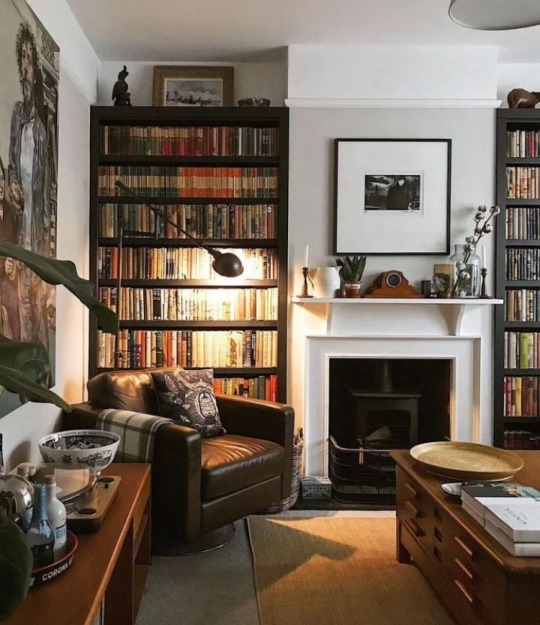
Collect books, even if you don’t plan on reading them right away. Nothing is more important than an unread library.
Daily inspiration. Discover more photos at Just for Books…?
6 notes
·
View notes
Text

Peter Eötvös
Hungarian conductor of modernist music who went on to compose operas with texts ranging from Three Sisters to Angels in America
The Hungarian composer and conductor Peter Eötvös, who has died aged 80, is now best known for the 12 operas that he wrote during the last 25 years of his life. Before that, he played a leading role as a conductor specialising in the promotion of European musical modernism.
Premiered in Lyon in 1998, the work that launched Eötvös’s career as a successful opera composer was Three Sisters. The libretto, written with Claus H Henneberg, reworks Anton Chekhov’s play into a series of three “sequences”, each offering a version of events from the point of view of a single character; no fewer than four roles are taken by countertenors.
From then onwards, he frequently added new stage works to an already growing number of concert works in an extensive output notable for its radiant lyricism and brilliant orchestration. By extending the modernist origins of an approach rooted in the music and ideas of Pierre Boulez and Karlheinz Stockhausen with the aid of deeply considered investigations of other music of cultures beyond Europe, Eötvös gradually found his own voice.
Stockhausen had already drawn on Japanese musical and theatrical traditions, and Eötvös’s earliest opera, Harakiri – based on the ritual suicide of Yukio Mishima – was composed as far back as 1973, while both composers were working together in Osaka. Subsequently, however, Eötvös’s style – variously influenced by Chinese as well as Japanese traditions, by Indian, African and Basque musics, by jazz and, not least, by Béla Bartók and the folk repertoires of his native Transylvania – developed much of its individuality from interrogations of those cultures that went far beyond any mere cultural tourism.
His instrumental compositions, as well as his operas, often spring from such sources: the large-scale orchestral work Atlantis (1995), for example, draws on Transylvanian dances that act as a symbol of a lost culture associated, for the composer, with renewed hope. In later years he received many commissions from the world’s leading orchestras: in 2016, for instance, for Oratorium Balbulum, to a text by Péter Esterházy, for the Vienna Philharmonic Orchestra, premiered at the Salzburg festival. Ruminating on a variety of topical political issues, from the 9/11 terrorist attacks to relationships between countries, this work is typical of Eötvös’s social and political concerns.
But his operas already seem likely to represent the most enduring and surprisingly varied dimension of his output. Adapting novels and plays by writers both classic and modern – including Jon Fosse, Jean Genet, Tony Kushner and Gabriel García Márquez – these works demonstrate both Eötvös’s wide literary ambitions and his willingness to explore a variety of different dramatic approaches, comic as well as tragic. He was assisted in devising some of these opera libretti by Maria Eötvösne Mezei, his third wife.
Le Balcon – its libretto, by Françoise Morvan, André Markovitz and the composer, derived from Genet’s now classic tale of power struggles within a revolutionary setting – was first seen at Aix-en-Provence in 2002. Mezei’s libretto for Angels in America (2004) boils down to less than three hours the original seven hours of Kushner’s play about HIV/Aids.
Several of his operas have been seen in the UK. When his Márquez-based Love and Other Demons was produced at Glyndebourne in 2008, Eötvös became the first non-British composer to have a stage work premiered there. Described by the composer as “a bel canto opera”, it explored illicit love, superstition, race and demonic power, with a libretto by Kornél Hamvai. The music underpins the drama with an innate understanding of how orchestral forces can enhance the overall effect; though indulging in some gorgeous sounds, the composer displays the rare knack of knowing when less can sometimes be more powerful than more.
Eötvös’s final opera, Valuska – also his first with a libretto in Hungarian, by Mezei and Kinga Keszthelyi – was drawn from the novel The Melancholy of Resistance, by László Krasznahorkai: a tragi-comic, surreal story centring on a newspaper delivery man and the arrival in his small town of a circus with, as its star attraction, the world’s largest taxidermied whale. Valuska was premiered in Budapest last December.
Eötvös was, like his older compatriots György Ligeti and György Kurtág, a native of multi-ethnic Transylvania – then in Hungary but subsequently transferred to Romania; his birthplace was Székelyudvarhely. The turbulent final months of the second world war caused his family, including his mother, Ilona Szucs, to flee westwards. She was a pianist, and his father, Laszlo Eötvös, was a lawyer. Peter’s early childhood was spent in Miskolc, a northern Hungarian town where he first met Ligeti. The latter was already becoming established as a composer and teacher by the late 1940s, and the two remained in contact.
Eötvös studied piano and composition at the Franz Liszt Academy in Budapest from 1958 onwards; after advice from Zoltán Kodály, János Viski became his composition teacher. He soon gaining a reputation for improvising to accompany silent films and composing scores for both cinema and theatre.
In 1966, at the age of 22, he moved to Cologne on a scholarship to work with Stockhausen. He also studied composition with Bernd Alois Zimmermann and began to conduct. When I first went to the Darmstadt Summer School, in 1974, I recall Eötvös not only as one of Stockhausen’s closest acolytes but also as a member of a recently formed group of young Cologne-based musicians calling themselves the Oeldorf Group and specialising in live performance involving electronics.
From 1978, after Boulez asked him to conduct the opening concert of IRCAM, his Institut de Recherche et Coordination Acoustique/Musique, in Paris, Eötvös found fame as a conductor specialising in all the latest compositional trends that helped to drive the global modernist agenda of the time. He quickly assumed the position of musical director of Ensemble Intercontemporain, IRCAM’s flagship chamber orchestra.
He conducted the world premieres of Stockhausen’s operas Donnerstag aus Licht (1981) and Montag aus Licht (1988). In the UK, he conducted the Covent Garden performances of Donnerstag in 1985 and was principal guest conductor of the BBC Symphony Orchestra from that year until 1988. He worked with the London Sinfonietta and also conducted Leos Janáček’s The Makropulos Case at Glyndebourne in 2001.
It was only after relinquishing his duties with the Ensemble Intercontemporain, in 1991, that Eötvös really came to the fore as a composer. With his new status on the European scene, and the political events of 1989 onwards, came new responsibilities.
He taught conducting and contemporary chamber music in both Karlsruhe and Cologne in Germany. Having already founded the International Eötvös Institute for young conductors and composers in Budapest in 1991, he went on to establish the Peter Eötvös Contemporary Music Foundation in 2004. It was at this moment, when Hungary joined the European Union, that Eötvös and his wife Maria – who had both previously lived in Cologne, Paris and then Hilversum in the Netherlands – finally moved back to Budapest.
A son from Eötvös’s first marriage, to the actor Piroska Molnár in 1968, predeceased him. In 1976 he married the Taiwanese-German pianist Pi-hsien Chen, with whom he had a daughter, Ann-yi. They divorced and he subsequently married Maria Mezei in 1995. He is survived by her, Ann-yi and by two stepsons from that marriage, Peter and Daniel.
🔔 Peter Eötvös, composer and conductor, born 2 January 1944; died 24 March 2024
Daily inspiration. Discover more photos at Just for Books…?
6 notes
·
View notes
Text

Hotel Sacher & the οriginal Sacher torte
Daily inspiration. Discover more photos at Just for Books…?
13 notes
·
View notes
Text
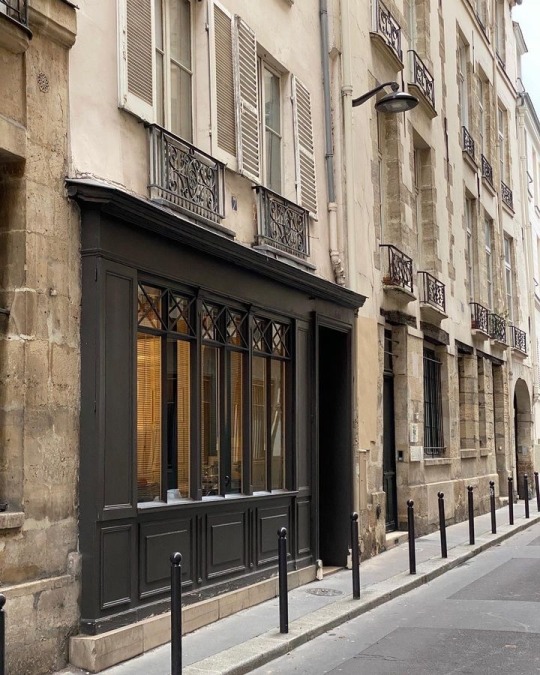
We’ll Always Have Paris . . . 🗼☕🥐
Daily inspiration. Discover more photos at Just for Books…?
6 notes
·
View notes
Text
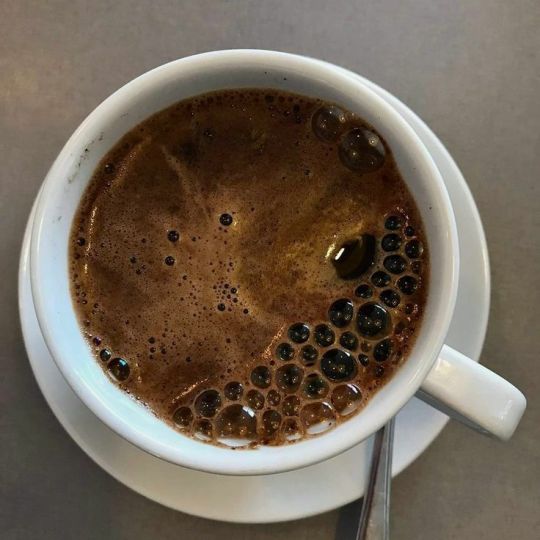
Coffee the Old School Energy Drink ❗☕☕☕
Daily inspiration. Discover more photos at Just for Books…?
4 notes
·
View notes
Text
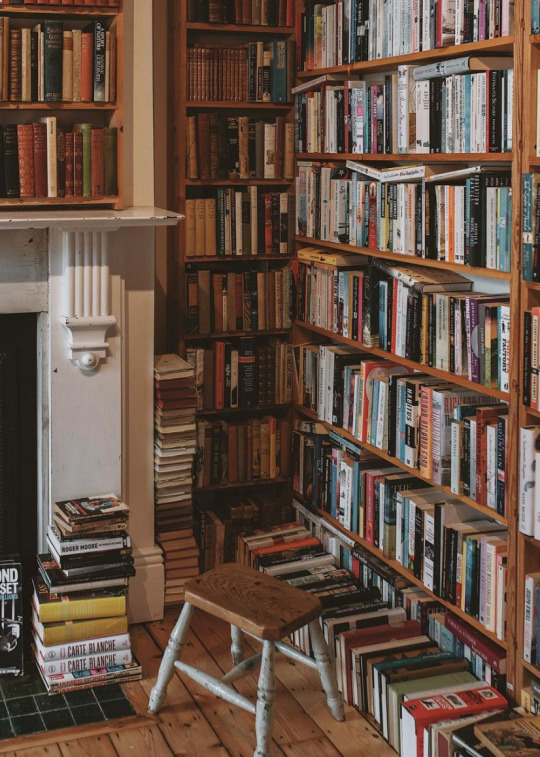
Collect books, even if you don’t plan on reading them right away. Nothing is more important than an unread library.
Daily inspiration. Discover more photos at Just for Books…?
6 notes
·
View notes
Text

Από την ώρα που άρχισαν να ακούγονται τα ονόματα που θα κοσμήσουν με την παρουσία τους τα ευρωψηφοδέλτια ιερή οργή πλημμύρισε την ελληνική κοινωνία. «Μα μπορούν τώρα αυτοί να μας αντιπροσωπεύσουν στο ευρωκοινοβούλιο;» αναρωτήθηκαν τα μέλη του εξυπνότερου, εργατικότερου και πιο βασανισμένου λαού στον κόσμο που βλέπει το υψηλό του επίπεδο να κατακρημνίζεται με την επιλογή των υποψηφίων.
Για να μην παρεξηγηθώ, να ξεκινήσω λέγοντας ότι δεν έχω καμία εκτίμηση στο σελεμπριτομάνι που και σε αυτές τις εκλογές γέμισε τα ψηφοδέλτια των κομμάτων. Παραδεχόμενος ότι ζηλεύω όσους από αυτούς εκλεγούν και εξασφαλίσουν 25.000+ μηνιάτικο για τα επόμενα 5 χρόνια, οφείλω να πω ότι τους περισσότερους δεν θα τους εμπιστευόμουν ούτε για να μου πάρουν τσιγάρα από το περίπτερο εκτός αν κάπνιζα και ήθελα να το κόψω. Αλλά δεν καταλαβαίνω γιατί ένας ηθοποιός του συρμού ή μια παρουσιάστρια λαϊφστάιλ εκπομπών θα είναι χειρότεροι ευρωβουλευτές από πχ. τον Βαγγέλα τον Μεϊμαράκη ή τον σύντροφο Ανδρουλάκη.
«Ναι μα το επίπεδο είναι πολύ χαμηλό και όλο και χαμηλώνει και μπλα μπλα μπλα» θα αποκριθεί με αγωνία ένας ανήσυχος ψηφοφόρος και εγώ με τη σειρά μου θα τον ρωτήσω «νομίζεις ότι μπορεί να είναι το επίπεδο υψηλότερο;»
Αναγνωρίζω πως με δεδομένο ότι το επίπεδο των αντιπροσώπων μιας χώρας (και άρα και των υποψηφίων να γίνουν αντιπρόσωποι) δεν μπορεί να είναι πολύ διαφορετικό από το επίπεδο του συνόλου των κατοίκων της χώρας, θα ήταν ωραίο τα κόμματα να προσπαθούν ώστε οι υποψήφιοι τους να είναι κάπως πιο ψηλά από τον μέσο όρο. Αλλά αυτό φοβάμαι πως ήδη συμβαίνει.
Κοιτάχτε γύρω σας, δείτε λίγο τηλεόραση (όσο αντέχετε), πηγαίνετε μια βόλτα σε μια πολυσύχναστη πλατεία ή κατεβείτε ένα Σάββατο την Ερμού και γενικά παρατηρείστε τους ανθρώπους γύρω σας. Δεν χρειάζονται ιδιαίτερες ικανότητες παρατήρησης για να καταλάβει κανείς ότι ακόμα και αυτά τα τηλεψηφοδέλτια είναι πάνω από το μέσο όρο της κοινωνίας στην οποία απευθύνονται.
Δεν θέλω να σας πληγώσω αλλά το επίπεδο της ελληνικής κοινωνίας είναι πολύ χαμηλό. Μπορεί να θέλουμε να είναι υψηλότερο αλλά είμαστε αρκετά μεγάλοι για να μην καταλαβαίνουμε ότι άλλο η επιθυμία και άλλο η πραγματικότητα. Και πριν διαφωνήσετε σκεφτείτε τον τρόπο οδήγησης και τον σεβασμό στον ΚΟΚ (δηλαδή τον σεβασμό στους άλλους ανθρώπους), σκεφτείτε τους σωρούς από σκουπίδια σε κάθε δημόσιο χώρο που έχει την ατυχία να φιλοξενήσει ομάδες Ελλήνων, σκεφτείτε τα πανεπιστήμια, σκεφτείτε τα σχολεία, σκεφτείτε τις συμπεριφορές, σκεφτείτε πόσοι συμπολίτες φοβούνται ότι τους ψεκάζουν ή νομίζουν ότι η πανδημία ήταν ένα παγκόσμιο πείραμα και τέλος μπείτε σε μια πολυπληθή σελίδα ενός μέσου κοινωνικής δικτύωσης (αν και σ’ αυτή την περίπτωση πρέπει να είστε ιδιαιτέρως ανθεκτικοί στην συμπυκνωμένη βλακεία). Υπάρχει τίποτε σ’ αυτά που να μαρτυράει υψηλό ή έστω μέτριο επίπεδο;
Φίλες, φίλοι και οι υπόλοιποι, κι εμένα με απωθούν οι περισσότεροι υποψήφιοι ευρωβουλευτές, αλλά ειλικρινά δεν βλέπω κάτι που να δικαιολογεί άλλες απαιτήσεις. Στην πραγματικότητα κοιτώντας μια γύρω μου και μια τους υποψήφιους το μόνο που μου ‘ρχεται να πω είναι «για Ελλάδα και πολύ είναι».
Daily inspiration. Discover more photos at Just for Books…?
3 notes
·
View notes
Text

Good morning❗ 🎶☕🍩🌞
Daily inspiration. Discover more photos at Just for Books…?
18 notes
·
View notes
Text

Bookstores are lonely forts, spilling light onto the sidewalk. They civilize their neighbourhoods.
Daily inspiration. Discover more photos at Just for Books…?
6 notes
·
View notes